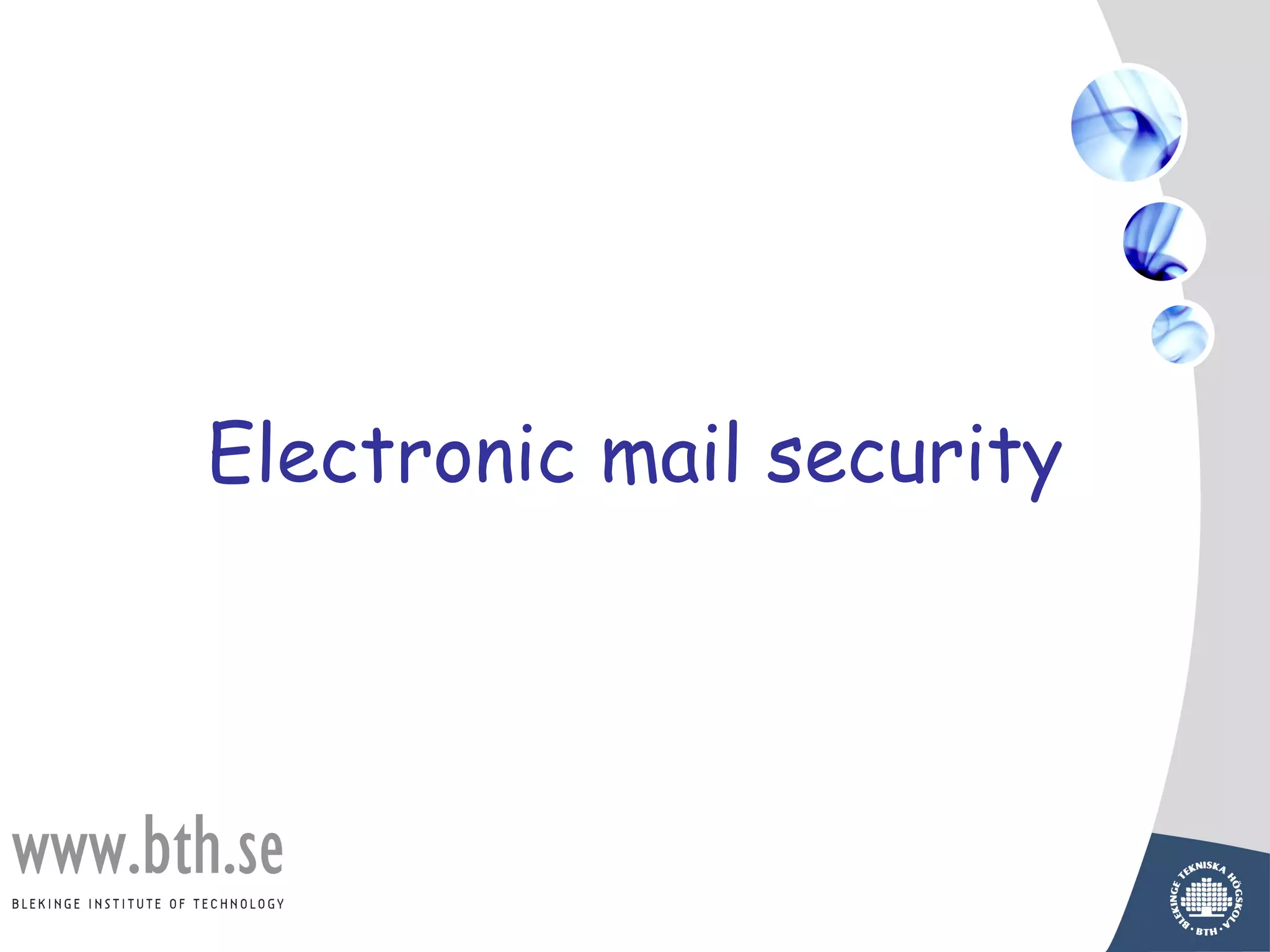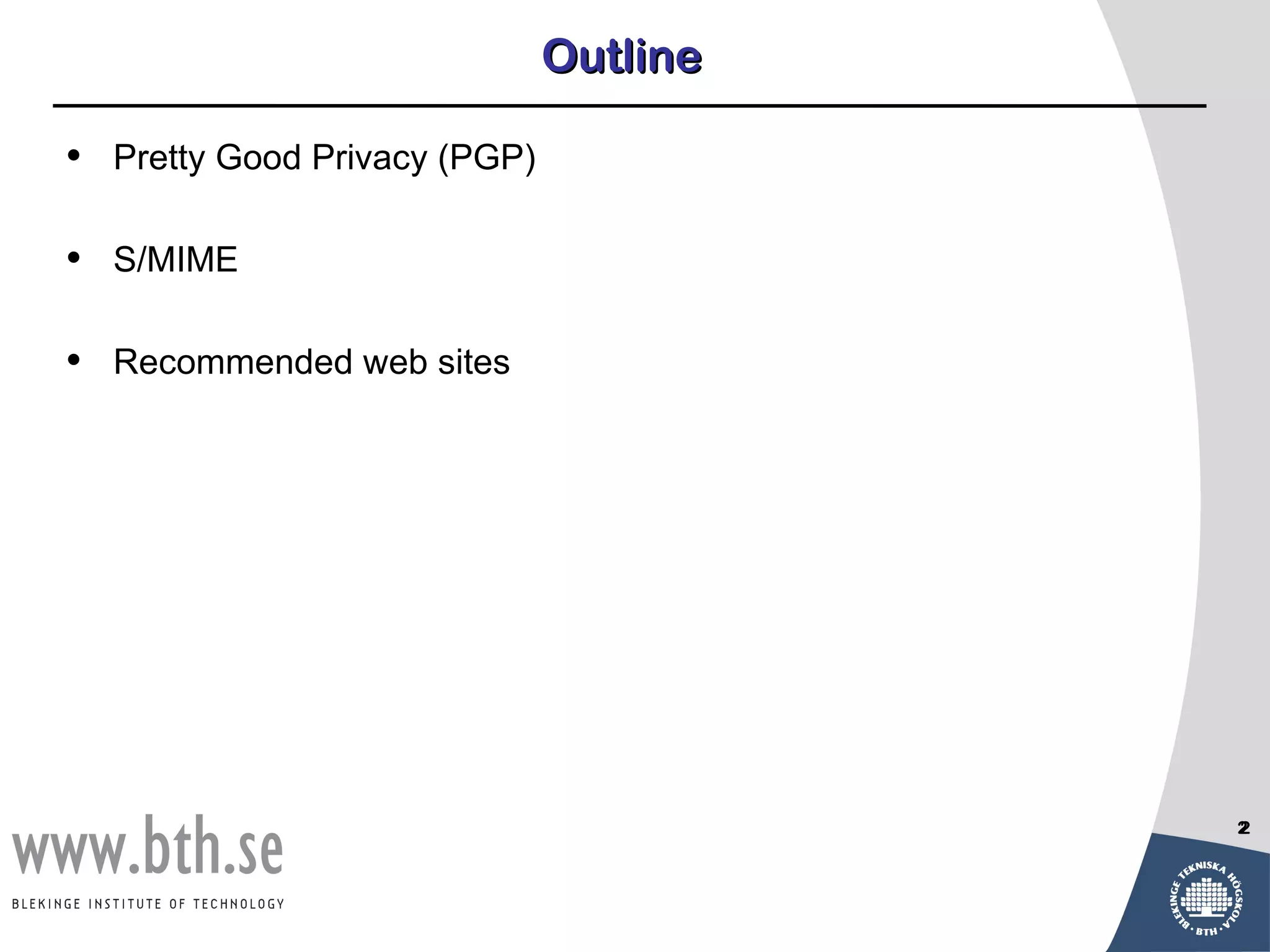PGP and S/MIME are two standards for securing email communications. PGP uses asymmetric encryption with RSA and symmetric encryption with algorithms like IDEA. It provides authentication, confidentiality, compression and is free but not controlled by standards bodies. S/MIME is the IETF standard that uses X.509 certificates and PKCS #7 to provide the same security features as PGP through signing, encrypting and signing/encrypting emails. It supports algorithms like SHA-1, RSA, Triple DES and is used more for professional email security. Both standards segment long messages and include mechanisms for trust and revoking public keys.








![PGP Cryptographic Function
E[PUb, Ks]
9
9](https://image.slidesharecdn.com/lecture8-mailsecurityrksfinal-120612174007-phpapp02/75/Lecture-8-mail-security-9-2048.jpg)




















